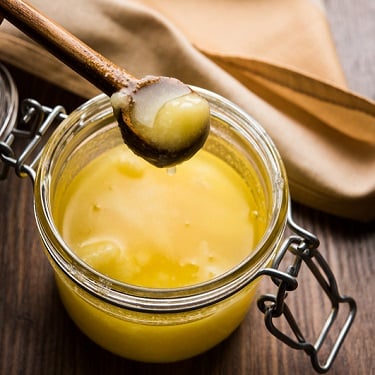8 Healthy Food Trends to Embrace in 2023

Usually, trends come and go, and when they go, we think, “good riddance.” Often, food trends tend to be either super restrictive (e.g., Hard 75, Whole 30) or unhealthy, often posing as healthy (look at the ultra-processed plant-based burgers, for but one example). Fortunately, with the year 2023, there are several healthy food trends we can get behind and hope stay for the long haul.
The Best Healthy Food Trends in 2023
1. Low-Cost Healthy Recipes
With increasing food costs, a lot of folks are looking for more affordable options. One big healthy food trend is to cut back on eating out, which can cost three times more on average than cooking and eating at home.
Fortunately, we’re not talking about big, complicated meals, either. Recipes are being simplified. They’re simple to make, take less time, and use fewer ingredients. Yet, they also focus on optimal nutrient content.
Some popular options include cheaper protein sources, such as beans and legumes and canned fish, like tuna, salmon, mackerel, and sardines, over more expensive, fattier options, like expensive steaks. While canned fish is one of the least costly protein options, it’s high-quality protein and is also rich in omega-3 fatty acids. Plus, it has a long shelf life and doesn’t need to take up room in the fridge or freezer.
Tinned shellfish, like mussels, oysters, octopus, and squid, is also having a moment. These foods again are rich in protein, omega-3 fatty acids, as well as zinc and vitamin B12. Plus, they tend to be lower in mercury than servings of larger fish. Yet they’re often less costly than their fresh or frozen counterparts.
To get more with less, shoppers are also increasingly finding ways to save on their groceries, including buying in bulk, choosing private label or generic brands over the big brand names, cooking from scratch, choosing less expensive cuts of meat (e.g., chicken thighs, beef chuck, and even oxtail), and reducing overall food waste.
It doesn’t just stop with food, though. Many people are scaling back on their morning coffee shop visits and brewing healthier concoctions at home. Some of our favorite more nutritious coffee shop flavors you can make at home include whipped coffees, collagen espressos, high-protein lattes, specialty flavors, and London fogs.
2. Getting More Creative with Vegetables
While we believe there’s still work to be done with the plant-based meat and dairy replacements (which tend to be ultra-processed and contain refined fats, sugars, and other additives), when it comes to using vegetables as stand-ins for higher calorie or unhealthier options, we’re all in. Toast with avocado over butter, obviously. But how about pasta that incorporates vegetables or legumes, such as chickpeas, lentils, spaghetti squash, and hearts of palm?
Alternative flours made from non-grains are also entering the scene. Look past the “usual” alternatives like amaranth or buckwheat. Now, you can find chickpea, banana, potato, and nut pastas that provide greater variety and nutrient options.
3. Embracing the Planet and Communities
From increased availability of urban farm produce to finding ways to decrease our own food waste to improving sustainability, a lot of us are considering the impact of our food choices on the planet and our own communities. Community food gardens, kitchen co-ops, and novel garden-growing options are being explored to increase access to healthy vegetables and fruits no matter where you live. Yes, even if you have no “land” to speak of, you can still grow vegetables in containers on a small patio or windowsill.
In addition, many farmers are leaving the more recent mono-crop practices behind and reintroducing traditional or even ancient crops and rotations while adding new hybrids that can better stand up to climate and weather changes. This means more products made with ancient grains like einkorn, taro, and amaranth are finding their way to grocery store shelves, pastry shops, and more.
After its time in the sun, people are pushing past a lot of the plant-based meat alternatives due to their high costs and overprocessing. Plus, there are concerns that the alternatives may not be as climate- or worker-friendly as advertised. Instead, plant-based eaters are looking for simpler options that are well-known to be good for the planet and the pocketbook. These include beans and legumes, seaweed, and mushrooms like maitake.
Environmentally-destructive, smelly factory farms are also under greater scrutiny. Customers are instead seeking smaller, local farms where animals are treated more humanely with more room to be the animals they are with diets they’re designed to eat (e.g., grass instead of grains). One area people tend to be willing to spend more for is on local, pasture-raised meat and eggs for the increased quality and improved environment. This is especially true as they also buy less of these types of foods overall.
Finally, we can’t forget about soil health, which is vital for continued cultivation. If there’s no dirt, there’s no food. Now even apartment dwellers have improved options for composting food scraps to give back to the planet we call home. Also, watch for food packages proclaiming foods grown with regenerative practices that prioritize soil and biodiversity.
4. Zero Proof (i.e., Alcohol-Free)
Last year, there was an increase in sober curiosity. Many Americans put away bottles of booze and participated in Sober Octobers, Dry Januarys, and gave the new non-alcoholic or zero-proof offerings a try. And several companies raised a glass to the occasion. As a result, there are new, flavorful alcohol-free beverages that go way beyond sodas and fizzy waters.
Brands such as Three Spirit, Ritual, CleanCo, Curious Elixirs, Lyre’s, and Spiritless have 100% zero-proof lineups. Other familiar brands (e.g., Tanqueray and Gordon’s) also came out with alcohol-free options. These new drinks are gaining ground as they allow you to enjoy traditional cocktails with alcohol-free versions of gin, vodka, rum, and tequila. They’re also significantly lower in calories while still packing a potent flavor punch. Plus, mocktail recipes offer the ritual of a cocktail without the side effects (e.g., disrupted sleep, decreased inhibitions, foggy brain, hangovers, etc.).
If your go-to beverage of choice is beer, there’s a slew of new options that actually taste like beer. Really. Take a swig of non-alcohol Heineken, Athletic Brewing (with various options), or Becks NA if you’re curious. Many also come with a significantly lower calorie count than the original.
And, for folks who aren’t ready to give up booze altogether (i.e., the NOLO crowd), there are also several low-ABV drinks, including low-alcohol wine (less than 12% ABV) from Mind & Body Wines, Unusual Wines, and others. To really save on calories, though, you can choose non-alcoholic wine, which can have as little as 9 calories per glass compared to 73 calories per glass for low-alcohol wines, and 110 to 120 for most full-alcohol options.
There’s also a growing trend in botanical elixirs used to flavor beverages. From floral flavors like elderflower and lavender to herbal additions to earthy botanicals, mixologists are creating fresh flavors for those mocktails that provide a whole new experience without the buzz.
5. Postbiotics for Gut Health
You’ve likely heard of probiotics and prebiotics for the health of the gut. Both are essential and available in a wide range of foods and supplements. Now, though, experts are embracing a new piece of the gut-health puzzle: postbiotics. These are the metabolites (i.e., end products) of the fermentation process within the gut.
Researchers are examining the potential antioxidant and anti-inflammatory benefits of these metabolites on gut health and immune-system functioning. Postbiotics are found in the same types of foods where you find probiotics, including sauerkraut, kimchi, kefir, yogurt, and sourdough bread. However, unlike probiotics, postbiotics aren’t live cultures, so they appear to have more applications. More research, however, is needed.
6. Global Flavor Influences
Looking to expand your cuisine horizons? West African flavors appear to be this year’s viral craze (and one of the most popular healthy food trends). Look for dishes made with tomatoes, onions, and chilis with lemongrass, ginger, and peanuts in various forms (buttered, dry-roasted, ground, etc.) added.
Other foods from this part of the world that are showing up in more grocery stores and restaurants include millet, teff, sorghum, and fonio. Succotash and okra are also part of this cuisine.
Flavor tourism doesn’t just stop on one continent. Other globally-inspired cuisines to experiment with include Filipino, Eastern European, and tropical islands. Popular flavors include tropical fruits like pineapple, passionfruit, and yuzu to coconut curries and Caribbean spices to spicy hot chocolates, and so much more!
7. Going Nuts
No, I’m not talking about that weird cousin or ex. Rather, nuts and seeds are making a big comeback this year after decades of decline due to allergy concerns and high-calorie fears. These foods are finally getting recognized for the potent brain boosters they are. Yes, nuts and seeds are calorie-dense. But those calories come with a good dose of protein, healthy fats, and vitamins and minerals.
This trend isn’t just about the usual mixed nuts like walnuts, almonds, and pistachios, either. We’re also seeing new options, including cashew, chickpea, tahini, watermelon seed, and pumpkin butter spreads. Expect to see more nuts and seeds added to salads, smoothies, stir-fries, and stews for their robust flavor and abundant nutrients.
8. Getting Real
Move over high-color, unrecognizable, ultra-processed foods. In 2023, people will choose real foods over artificial selections, especially when choosing healthier or lower-calorie options.
For instance, people are adding dates as natural sweeteners to their cooking and baking as well as in energy bars and other convenient foods instead of little packets of powder. Other natural sweeteners overtaking ultra-processed sweets include maple syrup, coconut sugar, honey, and monk fruit.
As another example, margarine—even when it’s lower calorie—is being replaced with real butter, especially the type that’s produced from pasture-raised, grass-fed dairy cows.
2023 Healthy Food Trends
There’s a lot to be excited about this coming year as our tastebuds get treated while our wallets get some protection. Be curious and open-minded, and you’re sure to find some that tickle your fancy as they provide loads of fun and flavor—all while keeping your health and wellness goals on track.





 US Doctor: "Eating This Every Day Can Snap You Into Ketosis"
US Doctor: "Eating This Every Day Can Snap You Into Ketosis" 3 Key Nutrients to Help Lubricate Your "Tin Man" Joints
3 Key Nutrients to Help Lubricate Your "Tin Man" Joints AVOID Plant-Based Protein Powders (unless...)
AVOID Plant-Based Protein Powders (unless...)

